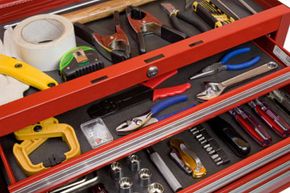Key Takeaways
- Organizing tools starts with sorting them into categories such as hand tools, power tools and seasonal tools, and deciding on a storage system that suits your space and usage frequency.
- Toolboxes, pegboards and specialized storage solutions like bins and cabinets can help keep tools accessible and in order while protecting them from damage.
- Regularly maintaining tools, including cleaning and storing them off the ground, is crucial to prolong their lifespan and ensure they are ready for use.
When was the last time you needed a hammer and knew exactly where to find it? For many people, keeping track of tools isn't easy. A screwdriver ends up in a sock drawer, or your measuring tape ends up in the laundry room. Before you know it, you have to hunt down tools every time there's a minor repair to be done. Whether you own just a few tools or a large collection, getting them organized could make your life a lot easier [source: Peterson]. Not only will you save time and prevent frustration, but you may waste less money on replacing lost tools.
Initially, getting organized might seem like more trouble than it's worth, because it is time consuming. But it can pay off in the end. The first thing you need to do is take inventory of all the tools you have. Open every drawer, check every cabinet and find a place where you can lay everything out in front of you. Once you know exactly what you're dealing with, organizing it will be a cinch. It's not a bad idea to begin by sorting everything into a few different categories. Put all the hand tools in one spot, all the power tools in another and anything you consider a seasonal tool in its own pile. Once you've done this, you'll be off to a great start.
Advertisement
Of course, during the sorting process, you'll probably find that your tools have a lot of accessories. Your drill, for example, probably has several drill bits, and if you have a socket wrench, you've most likely got at least a handful of sockets to go with it as well [source: Kelsey]. You'll need to decide how you want to organize these. It doesn't really matter how you do it -- your system just needs to make sense to you.
Now that you've got everything separated, let's start with the hand tools. Keep reading to find out how you can organize them efficiently and aesthetically.
Advertisement


